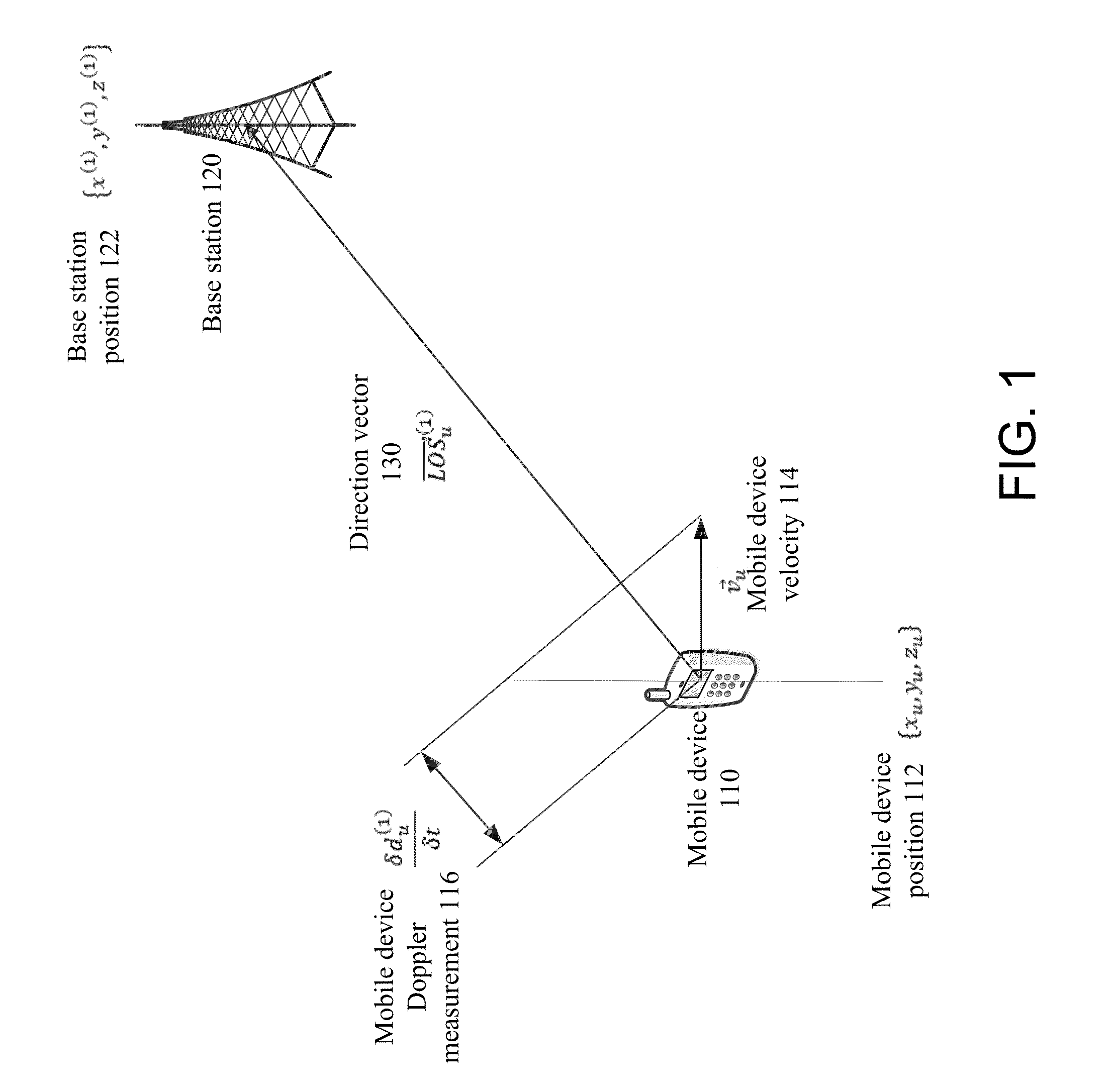Base station positioning using doppler observables, position, and velocity
a technology of doppler and position, applied in the field of base station positioning, can solve problems such as the need for precise timing, and achieve the effect of improving the positioning of the base station
- Summary
- Abstract
- Description
- Claims
- Application Information
AI Technical Summary
Benefits of technology
Problems solved by technology
Method used
Image
Examples
Embodiment Construction
[0031]Aspects of the disclosure relate to networked computing technologies and location services. In particular, aspects of the disclosure relate to systems, methods, apparatus, and computer readable media for determining the position of a base station in a network using Doppler observables between the base station and a mobile device.
[0032]Embodiments described herein provides a way to find the position of base stations using Doppler measurements without requiring clock synchronization between multiple devices. One embodiment for such a system includes a clock frequency at local oscillator that is relatively stable, and an ability to measure mobile device velocity. Because a velocity measurement measures a direction and speed of a mobile device, and a Doppler measurement can be used to determine a speed towards or away from a base station, these two measurements may be used to determine the direction of a base station from the point at which the measurements were taken. If such mea...
PUM
 Login to View More
Login to View More Abstract
Description
Claims
Application Information
 Login to View More
Login to View More - R&D
- Intellectual Property
- Life Sciences
- Materials
- Tech Scout
- Unparalleled Data Quality
- Higher Quality Content
- 60% Fewer Hallucinations
Browse by: Latest US Patents, China's latest patents, Technical Efficacy Thesaurus, Application Domain, Technology Topic, Popular Technical Reports.
© 2025 PatSnap. All rights reserved.Legal|Privacy policy|Modern Slavery Act Transparency Statement|Sitemap|About US| Contact US: help@patsnap.com



